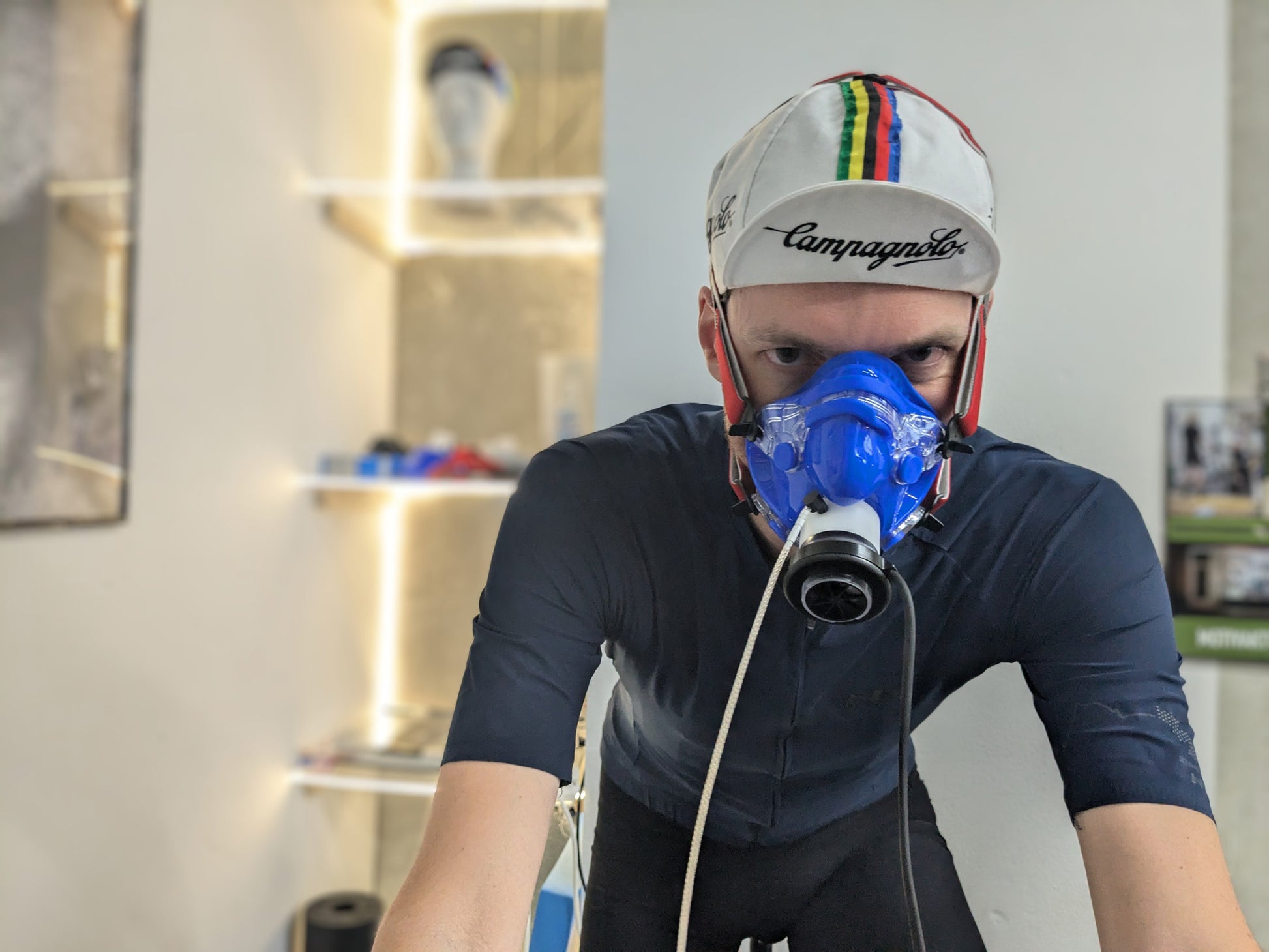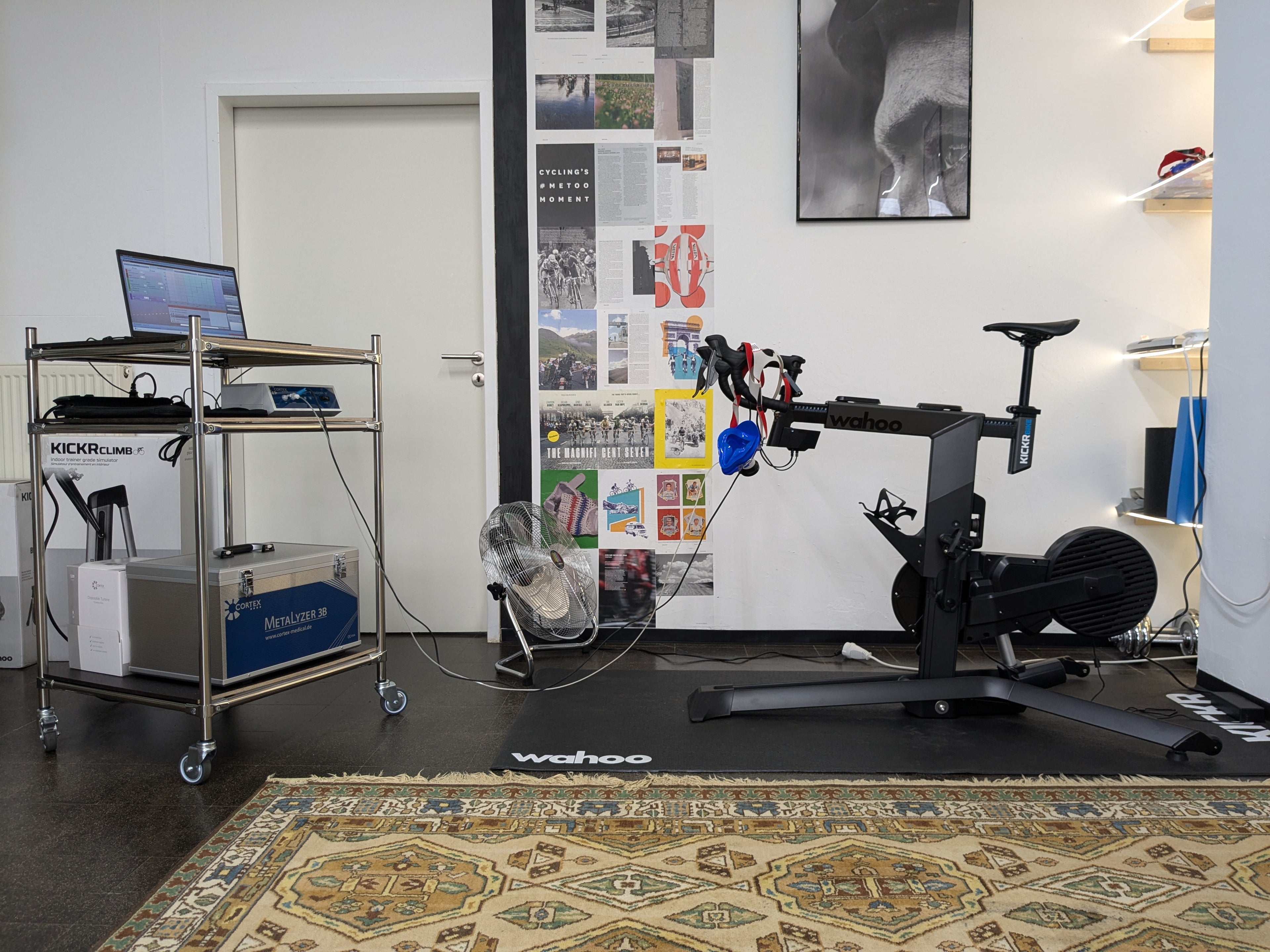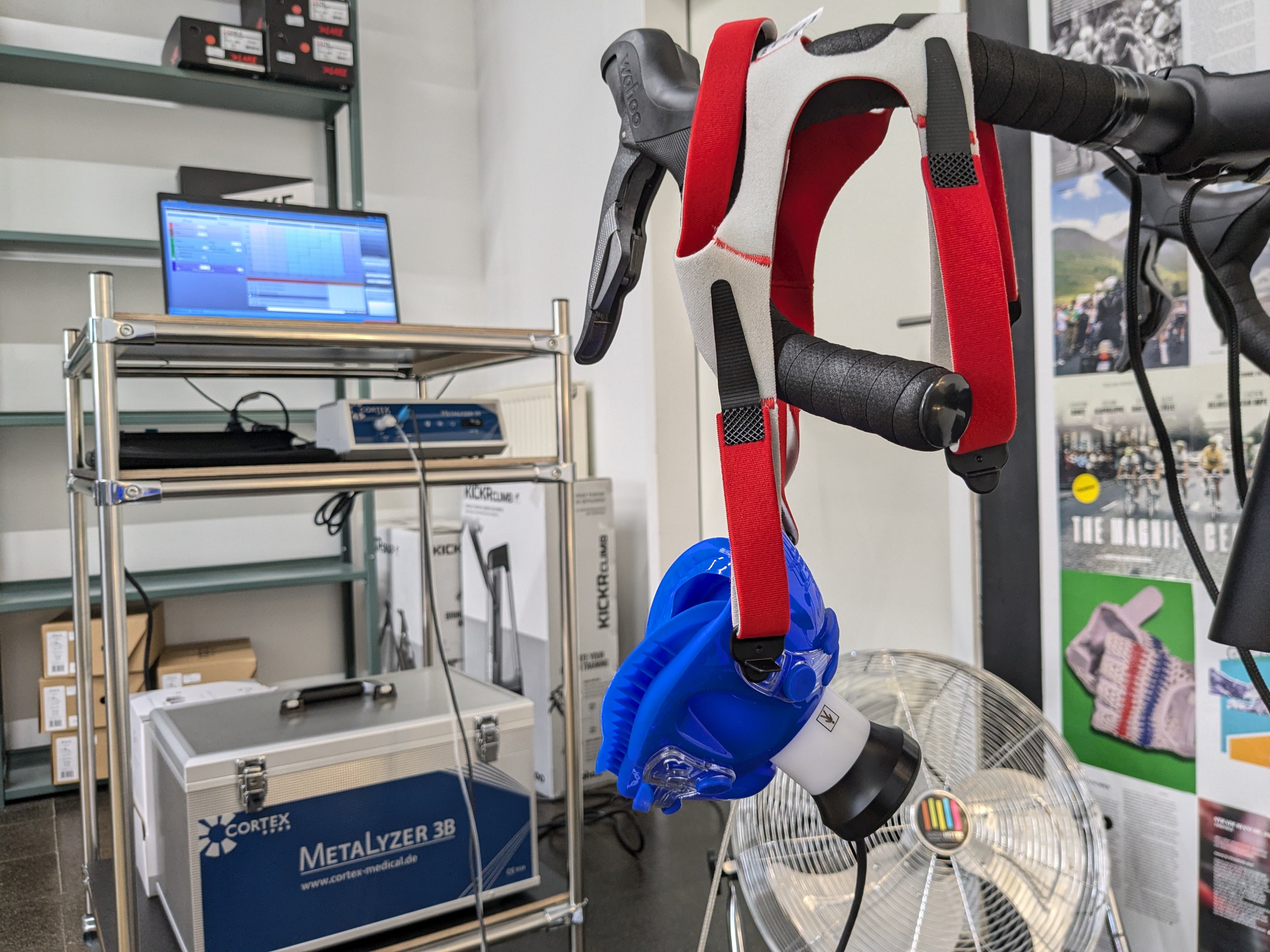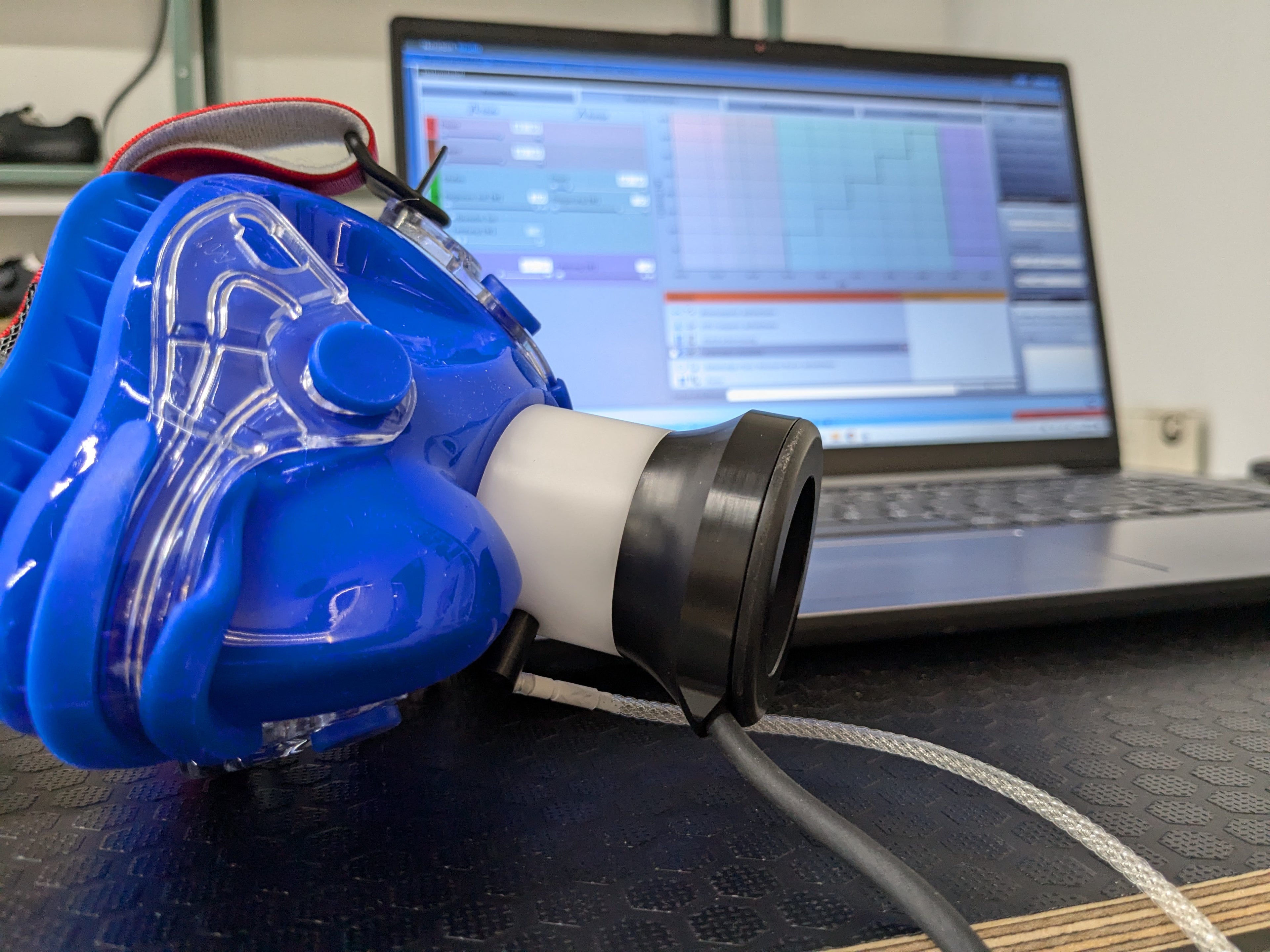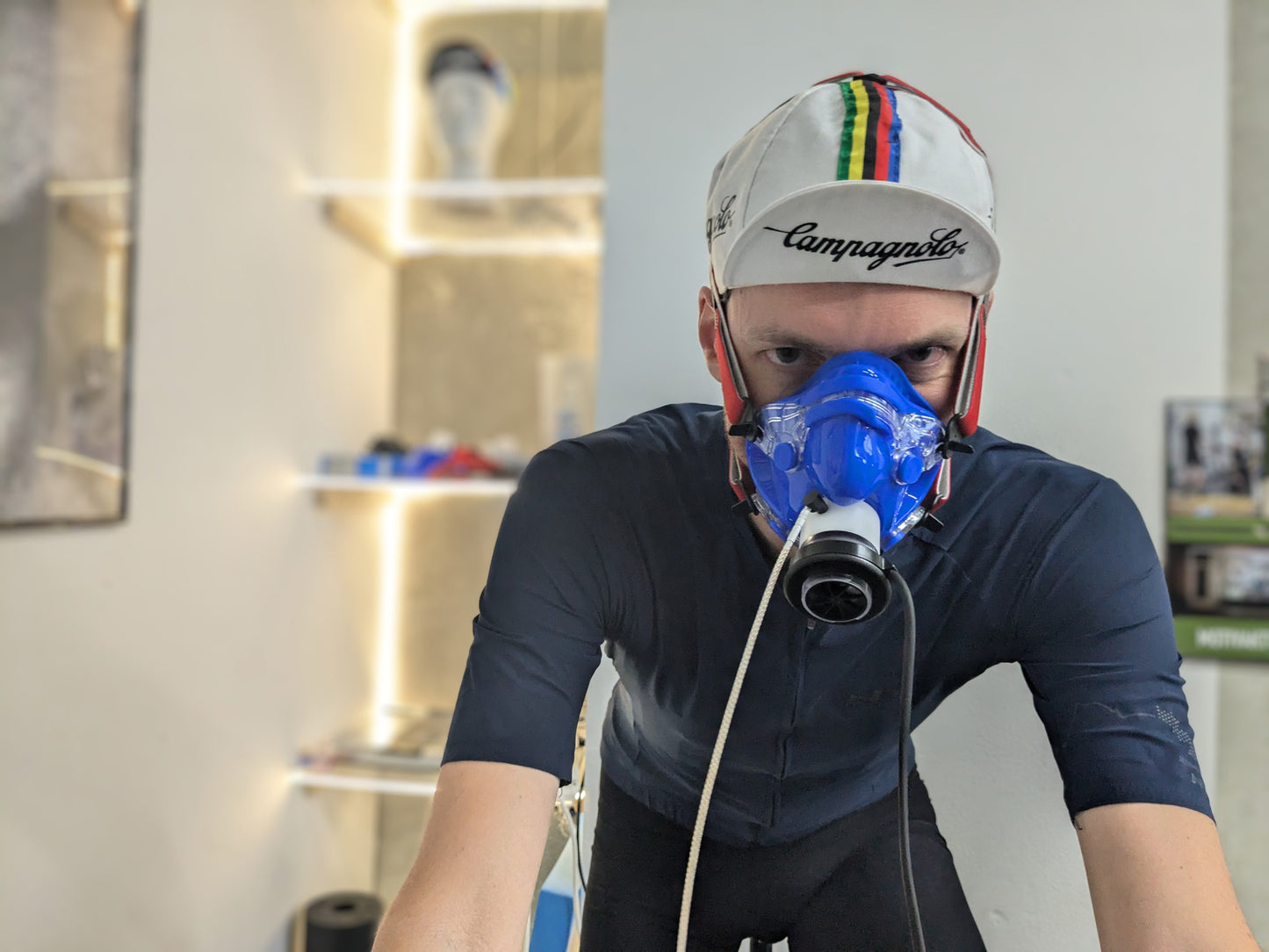
Du benötigst auch eine Laktatdiagnostik?
Im Buchungsprozess kannst du eine Laktatdiagnostik optional mit hinzubuchen. Such dir dazu zunächst einen Termin im Onlinekalender über den oberen Button aus und wählen dann im entsprechenden Feld die Laktatdiagnostik aus.
The process in three steps
1. Book your appointment
Book your appointment directly through our website. You'll receive all important information via email after your order.
2. Carrying out the diagnostics
We conduct performance diagnostics, including training planning, in our shop in Düsseldorf and discuss all the data with you.
3. You receive your evaluation
You'll receive all the important information and data to take home. Using this data, you can train precisely and efficiently at any time.
Our performance diagnostics team
-
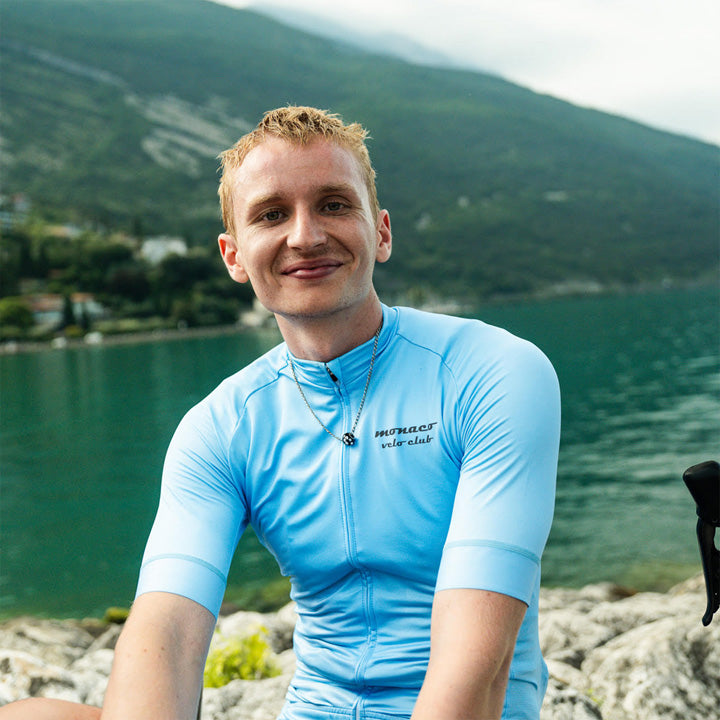
Micha Königs
Here you can find more information about meState Examination in Human Medicine | Heinrich Heine University in Düsseldorf
Certified diagnostician for spiroergometry | Center for Sports Medicine (ZfS) in Münster
Training in cardiological and sports medicine diagnostics | University hospitals in Düsseldorf and Tübingen
-

Nils Kehrberg
Here you can find more information about meM.Sc. Sports Scientist | Chair of Sports Medicine, University of Wuppertal
BA Sports Science | German Sport University in Cologne
Framesize Determination – Cyclefit Training in Limburg, Belgium
Certified diagnostician for spiroergometry | Center for Sports Medicine (ZfS) in Münster
Here you can find out why we do what we do
Background to performance diagnostics
Ventilatory threshold 1 (VT1)
The first ventilatory threshold (VT1), often referred to as the aerobic threshold, is the point during a steadily increasing physical exertion at which the body begins to exhale increased amounts of carbon dioxide. This is caused by an increase in lactate production in the working muscles, which can still be compensated for by lactate processing and the associated buffer systems in the body. This point marks the transition from a purely aerobic energy supply, in which the body primarily uses fat for energy, to a phase in which carbohydrates are increasingly metabolized.
Determining VT1 is crucial for training planning, as it marks the boundary between low and moderate intensity. Training around VT1 aims to improve aerobic capacity, the body's ability to efficiently generate energy at low to moderate intensity over extended periods. For cyclists, this means that a large portion of base training, which promotes endurance and optimizes fat burning, is performed within VT1. This helps strengthen the aerobic base, which is crucial for longer rides and races.
With the help of performance diagnostics, the VT1 can be precisely determined. Based on this threshold, the athlete can define specific training zones tailored to their individual physiological state. This allows for targeted control of the training process, leading to efficient use of training time and better adaptation of the body to the demands of the workout.
Maximum oxygen uptake (VO2Max)
VO2max (maximum oxygen uptake) is a measure of the maximum amount of oxygen the body can absorb, transport, and use during intense physical exertion. It is measured in milliliters of oxygen per kilogram of body weight per minute (ml/kg/min). It is an indicator of aerobic endurance capacity and provides information about the efficiency of an athlete's cardiovascular and respiratory systems.
In cycling, VO2 max is a crucial factor for performance, especially during intense and long-distance races. A high VO2 max allows a cyclist to ride at high intensity for longer periods of time, as the body is able to transport and utilize more oxygen to the working muscles. By systematically increasing VO2 max, cyclists can improve their aerobic capacity and their performance during intense exercise.
The range of optimal fat burning (FatMax)
The optimal fat metabolism range, also known as "FatMax," is the intensity range in which the body derives the highest proportion of energy from fat burning. For cyclists who want to specifically lose fat mass and lose weight, training within the optimal fat metabolism range is particularly important. In this intensity range, the largest proportion of calories burned comes from fat, thus optimally promoting the breakdown of fatty tissue. Regular training in this range not only promotes weight loss but also improves the aerobic base, which supports long-term endurance performance.
Spiroergometry vs. lactate step test
Spiroergometry and the lactate step test are both important methods for performance diagnostics in sports, but spiroergometry offers several practical advantages over the lactate step test. Here's an overview:
More comprehensive analyses of your metabolism
Spiroergometry not only measures lactate concentration, but also analyzes respiratory gas values (oxygen uptake, CO2 output), as well as heart rate and respiratory rate. This allows for a more detailed analysis of cardiopulmonary function and your metabolic ranges. We can see at which intensities your body uses different metabolic mechanisms. This allows us to determine when you burn fat optimally and to what extent carbohydrates are metabolized.
Representation of maximum oxygen uptake (VO2max)
Spiroergometry can accurately determine VO2 max, a crucial indicator of your endurance performance. The lactate step test cannot measure this directly.
Better validation of your threshold determination
In lactate diagnostics, there are over 25 threshold concepts in use internationally, which sometimes differ significantly in the determination of thresholds. Spiroergometry offers a more precise and better validated method for determining the ventilatory thresholds VT1 and VT2, as it is based on the direct measurement of physiological respiratory gas parameters. Although the lactate step test can also be used to determine thresholds, it is less direct and more susceptible to measurement inaccuracies (contamination of the sample by sweat, lymph fluid, etc.) and individual variability.
Diagnostic options
Spiroergometry can also be used to diagnose cardiopulmonary diseases or dysfunctions, which isn't possible with the lactate step test. This is especially relevant for athletes with existing or potential health problems. Even if we can't make a diagnosis during the appointment, spiroergometry can detect early signs of health impairments.

